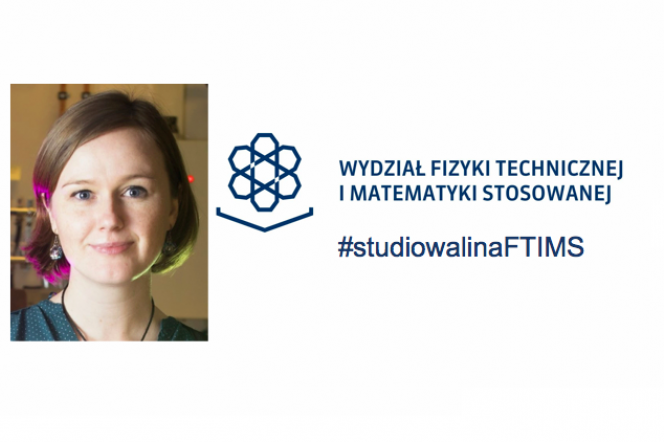Date added: 2021-05-31
What can you do after studying at WFTIMS? New information cycle

Aneta Stodólna (Smółkowska) was born on March 20th, 1984 in Ostróda, a small town in north-east part of Poland. In the period 2003-2008 studied at Gdansk University of Technology on the Faculty of Applied Physics and Mathematics. Aneta spent half-year schooling at AGH University of Science and Technology in Cracow, Poland with special emphasis on nuclear physics. In June 2008 Aneta received her M.Sc. degree cum laude in Applied Physics. Between July 2008 and March 2009 she worked at Katholieke Universiteit Leuven, Institute for Nuclear and Radiation Physics, Belgium, investigating the structure of exotic nuclei employing laser spectroscopy methods at the ISOLDE hall at CERN, Switzerland. In March 2009 she started her PhD research at FOM Institute for Atomic and Molecular Physics (AMOLF), Amsterdam, the Netherlands in the group of Extreme-Ultraviolet Physics. Her research – photoionization laser spectroscopy of H and He atoms – brought an experimental proof of a quantum mechanical theory developed in the 1980’s and allowed for a direct observation of one of the most elusive quantum objects – the wave function. Her paper in Physics Review Letter on “Hydrogen Atoms under Magnification(…)” received a significant attention in the scientific media all over the world and has been chosen as one of Physics World Top 10 Breakthroughs of the year 2013. In June 2014 she defended her PhD thesis on Photoionization Microscopy at the Radboud Univeristy in Nijmegen, the Netherlands. The same year she joined the Advanced Research Center for Nanolithography (ARCNL) in Amsterdam. As a post-doctoral fellow she developed a novel laser system with tailor IR pulses to generate plasma from Sn droplets and to investigate the properties of the generated plasma. On this project she worked closely with ASML – a Dutch company, which is the word leader in EUV lithography. Since 2018 she works at TNO, the Netherlands organization for applied scientific research as a plasma scientists and continues research for EUV lithography with the emphasis on EUV-induced plasmas and equivalent off-line plasma sources.
1. Aneta Stodólna, archimum prywatne / eng. Aneta Stodólna, private archives
2. Obraz chmury elektronowej atomu wodoru uzyskany za pomocą mikroskopu fotojonizacyjnego. Reprodukcja zdjęcia z publikacji Hydrogen Atoms under Magnification: Direct Observation of the Nodal Structure of Stark States w Physical Review Letters (http://ds.doi.org/10.1103/PhysRevLett.110.213001) za zgodą American Physical Society. // Electron cloud of hydrogen atom obtained by photoionization microscopy. Figure reproduce from Hydrogen Atoms under Magnification: Direct Observation of the Nodal Structure of Stark States published in Physical Review Letters (http://ds.doi.org/10.1103/PhysRevLett.110.213001) with permission from American Physical Society.



